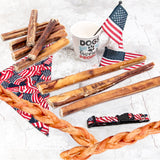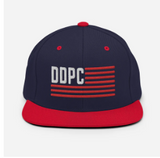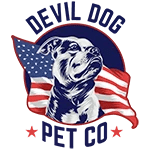When your dog needs protection from airborne pollutants, foxtails, or other environmental hazards, finding the right dog mask becomes a mission-critical decision that could literally save their life. Whether you're dealing with wildfire smoke choking your morning walks, dangerous foxtails lurking in tall grass, or simply want to keep your pup from scavenging questionable "treats" on the trail, the right protective gear separates responsible dog owners from those who hope for the best and pray nothing goes wrong.
Key Takeaways
- Choosing the right dog mask is essential for protecting your dog from airborne pollutants and environmental hazards.
- Dog masks can help safeguard your pet during wildfire smoke conditions and in areas with dangerous foxtails.
- Using a dog mask prevents your dog from ingesting harmful or questionable items while outdoors.
- Proper protective gear distinguishes responsible dog owners who prioritize their pet’s safety.
Table of Contents
- Understanding Dog Mask Fundamentals
- Professional-Grade Air Filtration Solutions
- Outdoor Adventure Protection Systems
- Sizing and Fit Fundamentals
- Specialized Dog Mask Applications
- Training and Mask Introduction
- Maintenance and Care Protocols
- Breed-Specific Considerations
- Making the Right Choice
- Professional Recommendations
- Cost-Benefit Analysis
- Future Developments
- Conclusion
Here's the unfiltered truth: not all dogs need masks, but when they do, half-measures and cheap knockoffs won't cut it. Your dog's respiratory system, eyes, and nose deserve the same level of protection you'd demand for yourself in hazardous conditions. The challenge lies in navigating a market flooded with everything from legitimate veterinary-approved protection to designer fashion statements that prioritize Instagram over actual safety.
At Devil Dog Pet Co., we've seen too many owners scramble for solutions after the crisis hits—when wildfire smoke blankets their neighborhood or their adventure dog comes home with foxtails embedded in sensitive areas. Smart leaders prepare before problems strike, and that means understanding exactly what dog masks can and cannot do for your four-legged teammate.
Understanding Dog Mask Fundamentals
A dog mask serves one primary mission: creating a barrier between your dog's vulnerable respiratory system, eyes, and nose while maintaining their ability to pant, drink, and breathe comfortably. Unlike human masks that cover just the mouth and nose, effective dog masks for dogs must account for canine anatomy, behavior, and the critical importance of thermoregulation through panting.
The key distinction separates functional protection from costume accessories. Legitimate protective masks for dogs address specific environmental threats—air pollution, foxtails, insects, UV exposure, or scavenging prevention. Fashion-forward options might look striking in photos but offer zero protection when your dog actually needs it.
Core Protection Categories
Air filtration masks target airborne pollutants, smoke, dust, and allergens. These face masks for dogs incorporate filter technology similar to human N95 or PM2.5 systems, adapted for canine facial structure and breathing patterns. They're essential during wildfire season, in heavily polluted urban areas, or for dogs with respiratory sensitivities.
Physical barrier masks focus on preventing contact with environmental hazards like foxtails, barbed seeds, insects, and debris. These dog face masks typically use mesh or fabric construction that blocks physical intrusion while maintaining airflow and visibility.
Behavioral control masks serve a different purpose entirely—preventing scavenging, reducing anxiety in overstimulating environments, or managing dogs who compulsively eat inappropriate items during walks. These face masks for dogs require careful introduction and should never restrict normal panting or drinking.
Professional-Grade Air Filtration Solutions

When wildfire smoke turns your morning sky orange or urban smog makes outdoor exercise questionable, air filtration becomes non-negotiable. K9 Mask leads this category with veterinary-approved designs that actually work under real-world conditions.
Their system addresses the fundamental challenge of canine respiratory protection: dogs need to pant for thermoregulation, unlike humans who can breathe entirely through filtered air. The K9 Mask design allows panting space while filtering incoming air through N95-equivalent or PM2.5 filtration media.
Filtration Technology Breakdown
N95 filters block 95% of particles 0.3 microns or larger—effective against most wildfire smoke, dust, and large allergens. PM2.5 filters target fine particulate matter 2.5 microns and smaller, crucial for urban air pollution and smaller smoke particles. Active carbon filters add chemical absorption capabilities for gases and odors that standard particle filters miss. For detailed sizing and fit, refer to the K9 Mask size chart.
The sizing system runs from Small through Extra Large based on muzzle circumference measurements. Small fits 6-10 inches, Medium covers 10-14 inches, Large handles 14-18 inches, and Extra Large accommodates 18-22 inches. Proper fit ensures effective filtration without restricting panting or causing discomfort.
Critical limitation: these masks currently don't accommodate brachycephalic breeds like Pugs, Bulldogs, or French Bulldogs due to their compressed facial structure. Flat-faced dogs need specialized solutions or alternative protection strategies during poor air quality events.
Real-World Application Scenarios
Wildfire season represents the most common use case for air filtration dog masks. When Air Quality Index readings climb above 150, outdoor exercise becomes hazardous for both humans and dogs. A quality filtration mask allows necessary potty breaks and short walks without exposing your dog's lungs to dangerous particulate levels.
Urban environments with persistent smog, construction dust, or industrial pollution create ongoing challenges for dogs with respiratory sensitivities. Daily walks through these conditions can trigger coughing, eye irritation, and long-term respiratory issues that proper filtration prevents.
Allergy management becomes possible when seasonal pollen or specific environmental triggers affect your dog's comfort. While not a cure-all, filtration can reduce exposure levels enough to make outdoor time enjoyable again for sensitive dogs.
Outdoor Adventure Protection Systems
Trail dogs, hunting companions, and outdoor adventure buddies face different hazards than urban pets. Foxtails, barbed seeds, biting insects, and UV exposure create risks that require physical barrier protection rather than air filtration.
The OutFox Field Guard dominates this category with veterinary-approved design specifically targeting foxtail prevention. Foxtails—those innocent-looking grass seeds—become dangerous projectiles that embed in eyes, ears, noses, and throats, often requiring emergency veterinary removal.
Foxtail and Debris Protection
The Field Guard uses patented vinyl-coated mesh that creates a protective barrier around your dog's head while maintaining visibility and airflow. The mesh blocks foxtails and similar debris from reaching sensitive areas without restricting normal activities like drinking, panting, or moderate exercise.
This dog foxtail mask approach proves especially valuable during peak foxtail season—typically late spring through early fall in western regions. Dogs who love exploring tall grass, hiking trails, or hunting in field environments benefit from proactive protection rather than reactive veterinary interventions.
The lightweight construction means most dogs adapt quickly to wearing the guard during outdoor adventures. Unlike heavy or restrictive alternatives, the Field Guard allows normal head movement and doesn't interfere with scent detection—crucial for working dogs or those who navigate primarily through smell.
Multi-Threat Outdoor Protection
Beyond foxtails, outdoor masks for dog protection addresses multiple environmental challenges simultaneously. UV protection becomes important for dogs with light-colored or thin coats, especially at high altitudes or during extended sun exposure.
Insect protection matters in areas with aggressive flies, gnats, or biting insects that target dogs' faces and ears. The mesh barrier discourages insects while allowing normal activities to continue uninterrupted.
Scavenging prevention serves dual purposes—protecting your dog from consuming dangerous items while respecting wildlife and Leave No Trace principles. Dogs who compulsively eat everything they encounter benefit from gentle behavioral barriers that redirect their attention without punishment or restriction. For more tips on managing outdoor adventures with your pup, check out our guide on how to take your dog camping this summer.
Sizing and Fit Fundamentals
The difference between effective protection and expensive frustration comes down to proper sizing and fit. Too loose, and the dog mask provides no protection while potentially creating hazards. Too tight, and you restrict breathing, create pressure points, or cause behavioral resistance that makes wearing impossible.
Muzzle circumference measurement provides the foundation for most sizing systems. Measure around the widest part of your dog's muzzle, typically just below the eyes and above the nose leather. Use a flexible measuring tape and add one finger's width for comfort—the mask should fit snugly without pinching or restricting jaw movement. You can also consult this comprehensive dog mask sizing guide for more detailed instructions.
Panting space remains non-negotiable for any face mask for dogs. Dogs regulate body temperature primarily through panting, so any mask that restricts this natural cooling mechanism becomes dangerous during exercise or warm weather. Quality masks incorporate panting chambers or design features that maintain airflow even during heavy breathing.
The fit test involves checking several key points: the mask stays positioned correctly during normal head movement, your dog can open their mouth comfortably for panting, drinking remains possible without removing the mask, and no pressure points develop around straps or contact areas after 10-15 minutes of wear.
Specialized Dog Mask Applications

Beyond basic protection, specialized dog masks address unique situations that standard pet gear can't handle. Medical recovery masks help dogs healing from facial surgeries or injuries avoid scratching or environmental contamination. These dog face masks incorporate breathable materials with antimicrobial properties while preventing access to healing tissues.
Anxiety management represents another specialized application where face masks for dogs provide gentle pressure therapy similar to thundershirts. Dogs experiencing overstimulation during fireworks, thunderstorms, or crowded events sometimes benefit from the calming effect of gentle facial pressure combined with reduced visual stimuli. For more on supporting anxious dogs, visit our article on how to handle separation anxiety in dogs.
Working dog applications require masks that maintain full functionality while providing protection. Search and rescue dogs, detection dogs, and service animals need masks for dogs that preserve their ability to work effectively while protecting against environmental hazards specific to their duties.
Grooming and Handling Masks
Professional grooming situations sometimes require dog masks for dogs that protect both the animal and the groomer. Dogs with aggressive tendencies or extreme anxiety during grooming benefit from properly fitted masks that prevent biting while allowing normal breathing and minimal stress. If you're handling grooming challenges, see our expert guide on cutting dogs' nails that are black for safe techniques.
These doggy face masks differ significantly from muzzles in their design philosophy. Rather than punishment or restraint, they provide security and structure that helps anxious dogs feel safer during necessary procedures. The key lies in proper introduction, positive association, and never using masks as behavioral corrections.
Veterinary procedures often require similar protection, especially for dogs with pain-related aggression or fear responses. A well-fitted dog face mask allows veterinarians to work safely while maintaining the dog's dignity and reducing stress compared to traditional restraint methods.
Training and Mask Introduction
The difference between a dog who tolerates their mask for dogs and one who actively resists comes down to introduction technique. Rushing the process or forcing acceptance creates negative associations that make future use nearly impossible.
Start with simple desensitization by letting your dog investigate the mask without any pressure to wear it. Pair the sight and smell of the mask with high-value treats, creating positive associations before attempting any fitting. This foundation phase might take several days for sensitive dogs.
Gradual fitting begins with holding the mask near your dog's face for seconds at a time, rewarding calm behavior, and immediately removing pressure if anxiety appears. Progress to brief contact, then partial fitting, building duration slowly based on your dog's comfort level rather than arbitrary timelines.
Common Introduction Mistakes
The biggest mistake involves emergency first-use scenarios where owners need dogs wearing masks immediately due to air quality or safety concerns. Without proper conditioning, even the most cooperative dog may panic when suddenly fitted with unfamiliar equipment during stressful situations.
Punishment-based approaches backfire spectacularly with mask training. Dogs who associate face masks for dogs with corrections, scolding, or forced compliance develop lasting negative associations that make future cooperation unlikely. Patience and positive reinforcement create willing partners rather than resistant victims. Learn more about positive socialization and training in our post on how to help your dog socialize with other dogs.
Ignoring individual temperament differences leads to unrealistic expectations. Some dogs adapt to dog face coverings within hours, while others need weeks of gradual conditioning. Pushing anxious or sensitive dogs too quickly often results in complete training failure and wasted investment.
Maintenance and Care Protocols
Proper maintenance extends the life of your dog mask while ensuring continued protection effectiveness. Air filtration masks require regular filter replacement according to manufacturer schedules—typically every 1-2 weeks with daily use or immediately after exposure to heavy pollution or smoke. For emergency oxygen mask resources, see Pet Oxygen Masks.
Cleaning protocols differ based on mask type and materials. Mesh-based dog masks for dogs usually tolerate gentle machine washing or hand cleaning with mild soap. Filtration masks require careful cleaning around filter areas to avoid damaging delicate filtration media.
Storage considerations prevent damage and contamination between uses. Clean, dry masks stored in breathable containers maintain their integrity longer than those stuffed into gear bags or left in vehicles where temperature extremes can degrade materials.
Inspection and Replacement Guidelines
Regular inspection identifies wear patterns, damage, or contamination that compromises protection. Check straps for fraying, mesh for tears or stretched areas, and filter elements for clogging or damage after each use session.
Replacement schedules depend on usage intensity and environmental conditions. Dog face masks used daily in harsh conditions need more frequent replacement than those reserved for occasional protection. Manufacturers typically provide usage guidelines, but real-world conditions may require more aggressive replacement schedules.
Signs requiring immediate replacement include visible damage to protective elements, persistent odors that cleaning can't eliminate, fit changes due to material stretching, or any compromise to the mask's ability to stay properly positioned during use.
Breed-Specific Considerations

Brachycephalic breeds face unique challenges with dog masks due to their compressed facial structure and already-compromised breathing. Pugs, Bulldogs, Boston Terriers, and similar breeds often cannot use standard filtration masks safely, requiring specialized solutions or alternative protection strategies.
Long-muzzled breeds like Collies, German Shepherds, and Greyhounds typically adapt well to most mask for dog designs but may need extended sizing to accommodate their facial length. Standard sizing charts sometimes underestimate the needs of these breeds.
Double-coated breeds require special attention to overheating when wearing any dog face mask. Their natural insulation combined with mask coverage can create dangerous temperature buildup during exercise or warm weather. Shorter usage periods and careful monitoring become essential. For more on products for different breed sizes, explore our large dog chews collection.
Working Breed Adaptations
Herding breeds often show initial resistance to face masks for dogs due to their need for unrestricted vision and hearing while working. Gradual introduction with positive reinforcement typically overcomes this resistance, but may take longer than with other breed groups.
Scent hounds require masks that don't interfere with their primary sense while still providing necessary protection. The challenge lies in balancing protection with their need to gather scent information from their environment.
Guard breeds may initially view dog face coverings as restraint rather than protection, triggering defensive responses. Patient conditioning that emphasizes choice and control helps these dogs accept masks as tools rather than restrictions.
Making the Right Choice
Selecting the right dog mask requires honest assessment of your specific needs, environmental challenges, and your dog's individual characteristics. Air quality concerns demand filtration technology, while outdoor adventures call for physical barrier protection. Fashion statements won't protect against real hazards when they matter most.
Quality matters more than price when your dog's health and safety are on the line. Veterinary-approved designs from established manufacturers provide reliability and support that cheap alternatives can't match. The cost of proper protection pales compared to emergency veterinary bills from preventable injuries or respiratory damage.
Your dog's comfort and acceptance ultimately determine success regardless of the mask's technical specifications. The best protection in the world provides zero benefit if your dog won't wear it when conditions demand it. Invest time in proper introduction and conditioning—it's as important as the equipment itself.
Seasonal and Environmental Applications
Wildfire season transforms dog masks from optional accessories into essential safety equipment. When air quality indexes spike and visibility drops, a properly fitted dog face mask becomes the difference between safe outdoor relief breaks and dangerous smoke exposure. Dogs in fire-prone regions like California, Colorado, and the Pacific Northwest need masks ready before emergency conditions hit.
Winter conditions create unique challenges where masks for dogs protect against road salt, ice melt chemicals, and frigid air that can damage sensitive nasal passages. Urban dogs face additional hazards from sidewalk treatments and vehicle exhaust concentrated in cold air. The right mask provides a barrier without restricting the panting necessary for temperature regulation.
Allergy seasons hit dogs just like humans, with pollen, dust, and airborne irritants triggering respiratory distress. Dog face masks with appropriate filtration help sensitive dogs enjoy outdoor time without the sneezing, watery eyes, and breathing difficulties that keep them housebound during peak pollen periods. For a more comprehensive approach to your dog's health, read our post on common dog health issues and how to prevent them.
Urban Versus Rural Considerations
City dogs face pollution challenges that rural dogs never encounter. Vehicle emissions, construction dust, and industrial particles create a cocktail of respiratory irritants that make face masks for dogs essential equipment rather than optional gear. Daily walks through urban environments expose dogs to particulate matter that accumulates over time, potentially causing long-term health issues.
Rural environments present different hazards where dog masks for dogs protect against agricultural chemicals, crop dust, and natural allergens in concentrated doses. Farm dogs working around livestock, feed storage, and equipment operations need protection from dust clouds and chemical applications that urban dogs never encounter.
Suburban dogs often face the worst of both worlds—urban pollution during commutes combined with rural allergens from landscaping, lawn treatments, and seasonal agricultural activities. Their doggy face masks need versatility to handle multiple environmental challenges throughout the day. For a full selection of dog gear and protection, browse our shop all products page.
Professional Recommendations
Veterinary professionals increasingly recommend dog masks as preventive health measures rather than reactive treatments. Forward-thinking vets recognize that respiratory protection prevents problems more effectively than treating damage after exposure. Their recommendations carry weight because they see the long-term consequences of environmental exposure in their patients.
Professional dog trainers emphasize the importance of early mask conditioning for dogs in high-risk environments. They understand that emergency mask use without proper training creates trauma that makes future protection nearly impossible. Training protocols developed by professionals ensure dogs accept face mask for dogs as normal equipment rather than punishment.
Canine respiratory specialists note increasing cases of pollution-related breathing problems in urban dogs. Their clinical experience drives recommendations for proactive protection using quality dog face masks rather than waiting for symptoms to develop. Prevention costs less than treatment, both financially and in terms of your dog's quality of life.
Emergency Preparedness Protocols
Disaster preparedness plans must include masks for dogs alongside food, water, and medication supplies. Emergency situations don't allow time for mask conditioning or size adjustments—the equipment needs to be ready and your dog needs to be comfortable wearing it before crisis conditions develop.
Evacuation scenarios often involve extended periods in vehicles, temporary shelters, or unfamiliar environments where dog face coverings provide comfort and protection. Dogs stressed by displacement cope better when familiar protective equipment reduces additional environmental stressors during already difficult circumstances.
First responders increasingly encounter dogs wearing protective equipment during emergency responses. Properly fitted dog masks that don't interfere with identification tags or handling make their jobs easier while keeping your dog safer during rescue or evacuation operations.
Cost-Benefit Analysis

Quality dog masks represent significant upfront investment, but the cost analysis becomes clear when compared to veterinary bills for respiratory treatment, emergency care during pollution events, or long-term management of preventable conditions. A $50-100 mask often prevents thousands in medical expenses.
Replacement costs factor into long-term budgeting, especially for dogs requiring daily protection. Filter replacements, wear-related renewals, and sizing changes as dogs grow or age create ongoing expenses that responsible owners must plan for. Budget-conscious owners often find that higher-quality masks last longer and provide better cost-per-use value.
Insurance considerations rarely cover preventive equipment like dog face masks, but some policies reduce premiums for dogs with documented preventive care protocols. The investment in protection equipment may qualify for health savings account reimbursement in some cases, making the financial impact more manageable.
Value Beyond Protection
The peace of mind that comes from knowing your dog has proper protection during environmental challenges provides value that's difficult to quantify. Owners report reduced anxiety about air quality alerts, outdoor activities, and seasonal challenges when their dogs have appropriate face masks for dogs available.
Social responsibility plays a role in mask adoption as well. Dogs wearing visible protection during poor air quality periods demonstrate responsible ownership and may encourage other owners to consider similar precautions. This community effect amplifies the benefits beyond individual protection.
Training benefits extend beyond mask acceptance to general handling and cooperation. Dogs conditioned to accept dog face masks typically show improved cooperation with other necessary equipment like harnesses, life jackets, or medical devices. The training investment pays dividends across multiple aspects of dog care.
Future Developments
Technology advances continue improving dog mask design with better materials, smarter filtration systems, and more comfortable fits. Manufacturers invest in research that addresses current limitations while developing solutions for emerging environmental challenges that dogs will face in coming years.
Smart mask technology incorporating air quality sensors, GPS tracking, and health monitoring represents the next evolution in canine protection equipment. These advanced dog masks for dogs will provide real-time data about environmental conditions and your dog's physiological responses to guide usage decisions.
Customization options expand as 3D printing and advanced materials make individually fitted masks more accessible. Custom-fitted dog face masks eliminate many current sizing and comfort issues while providing optimal protection for each dog's unique facial structure and needs.
Conclusion
The evolution of dog masks from specialized equipment to mainstream protective gear reflects our growing understanding of environmental health risks and our commitment to comprehensive canine care. Whether protecting against wildfire smoke, urban pollution, or outdoor hazards, the right mask provides essential protection that extends your dog's healthy, active years.
Success with any dog face mask depends on proper selection, patient introduction, and consistent maintenance. The investment in quality equipment and training time pays dividends in protection, peace of mind, and your dog's continued ability to enjoy outdoor adventures safely. As environmental challenges continue evolving, proactive protection becomes not just beneficial but essential for responsible dog ownership.
Download the FREE 10-Step Dog Prep Guide
Frequently Asked Questions
Is dog mask good for dogs?
Dog masks are rarely necessary and typically not beneficial for most dogs. Unlike humans, dogs regulate heat primarily through panting, so covering their face can cause overheating and stress. Masks designed for dogs should only be used under specific veterinary advice or for protection in dusty or polluted environments.
Is it safe for dogs to wear masks?
Generally, it's not safe or comfortable for dogs to wear masks meant for humans because they interfere with breathing and temperature regulation. Specialized dog muzzles or masks designed to ensure airflow and prevent biting can be safe when properly fitted and supervised. Always monitor your dog closely and avoid prolonged use.
Why do some people wear dog masks?
Some dog owners use masks or muzzles to prevent biting, licking wounds, or reduce barking. In rare cases, masks might be used to protect dogs from inhaling pollutants or allergens during walks in polluted areas. Other times, people might use novelty 'dog masks' as costumes or for social media, which should never restrict breathing or cause distress.
What is a mask on a dog?
A mask on a dog usually refers to a muzzle or protective covering placed over the dog's snout. Unlike human masks, these are designed to prevent biting or chewing, not to filter air. Proper muzzles allow dogs to pant and drink water, which is critical for their comfort and safety.
Do muzzles help aggressive dogs?
Muzzles can be an effective management tool for aggressive dogs by preventing bites in stressful situations. However, they don’t address the root causes of aggression and should always be used alongside behavior training from a professional. Proper introduction and fitting are vital to ensure the dog remains as comfortable as possible.
Do dog N95 masks work?
Dog N95 masks are not a standard or widely recommended product. Since dogs primarily breathe through their noses and pant to cool down, masks that restrict airflow can be harmful. There is no scientific evidence supporting the efficacy or safety of N95-style masks for dogs, so they should be avoided unless prescribed by a vet for a specific reason.






